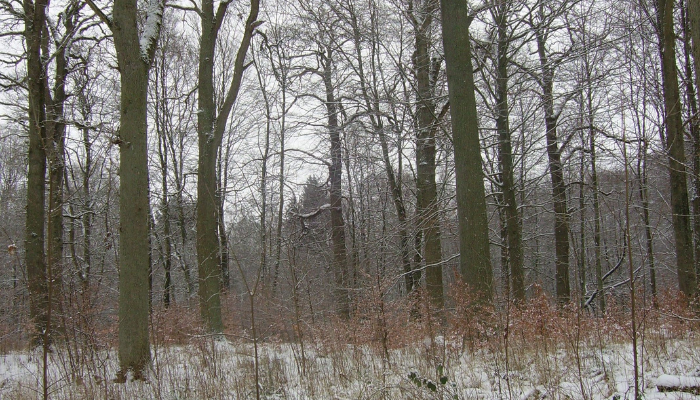05 April 2024
Natural Regeneration in Irish Woodlands: Germination

In this series of articles on natural regeneration, it has been shown that there are four important principals governing this process; seed production, seed predation, germination and establishment. In this article, Kevin O’Connell takes a closer look at the seed germination process.
Germination consists of three overlapping processes. Firstly, absorption of water by imbibition causes a swelling of the seed and eventual splitting of the seed coat. Enzymatic activity results in increased respiration. An increase in assimilation rates signals the use of starch food and its translocation to growing regions, causing cell enlargement and divisions, resulting in the emergence of a radicle and plumule (Willan, 1987).
Germination can only take place if the seed finds itself placed in favourable conditions as regards temperature, moisture and aeration (Anderson, 1953). Seeds which do not respond to conditions favouring germination are said to be dormant. Dormancy may be caused in many different ways. The embryo of the seed may not be fully developed when the fruit is ripe. Such seeds require a period of after-ripening while the embryo grows to full size before germination can begin. In some seeds, the seed coat may impose restrictions. Dormancy may be due to chemical inhibitors in the seed coat or in the endosperm with germination taking place only after the inhibitors have been deactivated (Aldhous, 1975).
In order for germination of a dormant seed to proceed, it must go through a dormancy breakage procedure called stratification (Aldhous, 1975). Forest nurseries can manipulate the stratification process to their advantage. It allows time to break dormancy within the seed. It facilitates uniformity of seed germination and allows for flexibility in the timing of sowing to overcome weather conditions, particularly late frosts.
Acorns ripen on the tree between September and November and beech mast between September and October (Savill, 1991). Beech mast can be retained on the tree up until November but fall after the first frost (Joyce, 1998). The seeds are not dormant and will germinate immediately on reaching favourable conditions. The radicle will grow over winter, the cotyledons and leaves will not emerge until spring (Harrington, 1998). The size of the seed is important. Evans (1984) has found that large acorns have a higher percentage germination than smaller ones and this produces larger plants at the end of the first growing season.
The embryo of sycamore seed can have two types of dormancy; (i) morphological (caused by the seed coat, the testa) and (ii) embryonic. The testa dormancy of mature seed is caused by an impermeable seed coat, which prevents the washout of inhibitors from the embryo (Webb, Wareing 1972). Sycamore seed is produced annually in adequate quantities and ripening takes place in September/October, when the samaras (winged seed) change colour from green to yellow (Joyce, 1998). Mast years generally occur every 3 years.
Sycamore seed can be classified as recalcitrant. Recalcitrant seed will die if their moisture content is reduced below some relatively high value (Aldhous, J.R. & Mason W.L 1994). The moisture content of sycamore seed when ripe is between 45 – 55% (Joyce, 1998) and our moist/wet winter weather alleviates the risk of desiccation.
Read the previous articles in this series:
Natural Regeneration in Irish Woodlands: Seed Production
Natural Regeneration in Irish Woodlands: Seed Predation
References
- Aldhous, J.R. (1975) Nursery Practice, Forestry Commission, HMSO, London
- Aldhous, J.R. & Mason W.L (1994) Nursery Practice, Forestry Commission Bulletin 111 HMSO, London Anderson, M.L. (1953) Prerequisites for Natural Seeding, Quarterly Journal of Forestry No.47, pp159 -169
- Evans, J. (1984) Silviculture of Broadleaved Woodlands, Bulletin 62, Forestry Commission, HMSO, London
- Harmer, R & Kerr, G (1995) Natural Regeneration of Broadleaved Trees, Research information note 275, Research Division, Forestry Commission
- Harrington, R. (1998) European Beech – How much do you know about Fagus Sylvatica. Irish Timber and Forestry, September pp 21 – 22.
- Joyce, P.M (1988) Growing Broadleaves in Ireland, COFORD, Dublin
- Savill, P.S. (1991) The Silviculture of Trees used in British Forestry, Rowe, Chippenham
- Willan, R.L, (1987) A Guide to Forest Seed Handling, FAO Forestry Paper 20/2 www.fao.org/docrep
